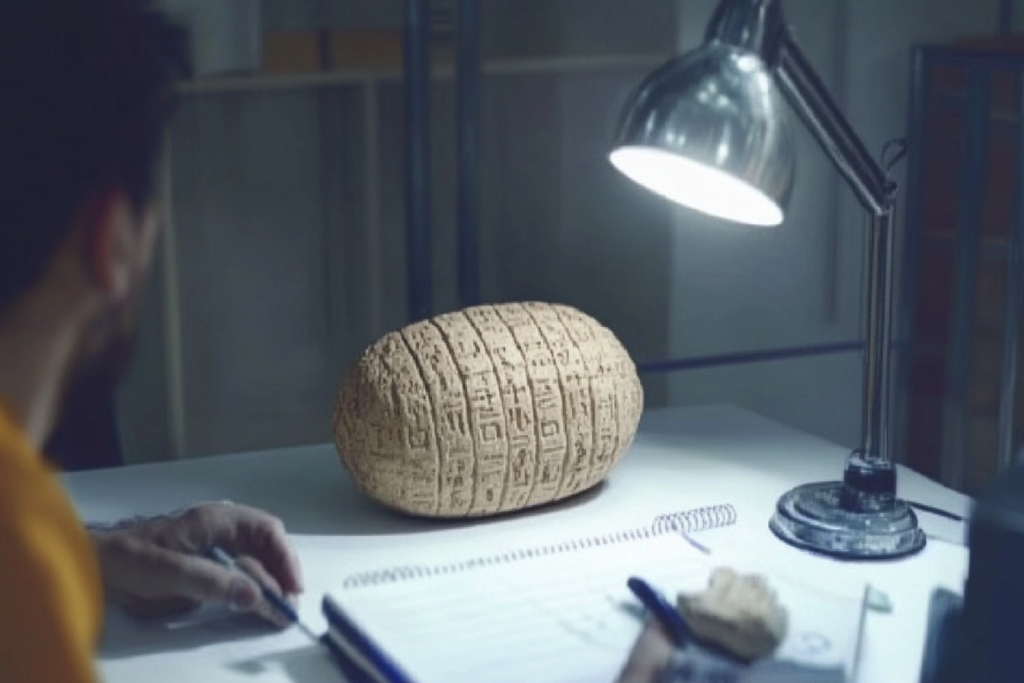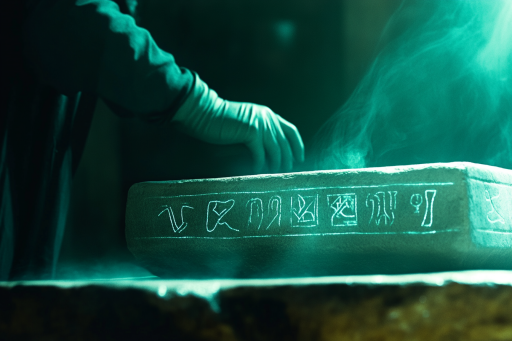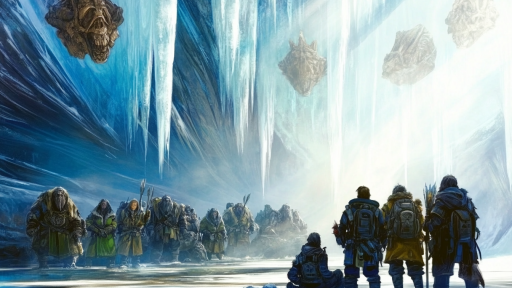
Throughout history, humanity has carved, painted, and inscribed symbols onto artifacts, leaving behind cryptic messages that continue to baffle scholars. Some of these markings seem to serve religious or ceremonial purposes, while others hint at lost languages, forgotten technologies, or something even more mysterious. Were these symbols simply decorative, or do they hold secrets that could rewrite history? As experts struggle to decipher their meanings, these enigmatic symbols remain an open puzzle, challenging everything we think we know about the past.
The Indus Script

Etched into ancient seals and pottery, the Indus script is one of the greatest linguistic mysteries of antiquity. Found in the ruins of the Indus Valley Civilization, these pictograms suggest a complex writing system, yet no one has ever successfully translated them. Some believe they represent a lost language, while others speculate they are purely symbolic, representing trade or religious rituals. Without a Rosetta Stone equivalent, the meaning of these symbols remains locked away in time.
The Rongorongo Glyphs of Easter Island

On the remote island of Rapa Nui, wooden tablets covered in an indecipherable script whisper of a forgotten past. The Rongorongo glyphs appear to be a form of writing, but no living person can read them, and their connection to Polynesian culture remains unknown. Some theories suggest they preserve sacred chants or astronomical records, while others believe they were a desperate attempt to document history before the island’s collapse. Could these carvings be the key to understanding the lost knowledge of Easter Island?
The Phaistos Disc

Unearthed in a Minoan palace on the island of Crete, the Phaistos Disc is covered in spiraling symbols unlike any known writing system. Each side of the clay disc contains a sequence of mysterious pictograms, stamped rather than carved, suggesting a form of movable type predating Gutenberg’s press. No translation has ever been confirmed, leaving experts to debate whether it’s an early script, a coded message, or even a hoax. If real, it could rewrite the history of ancient literacy.
The Voynich Manuscript’s Cipher

Filled with bizarre illustrations and an unknown script, the Voynich Manuscript is one of the most perplexing books ever discovered. Dating back to the 15th century, its pages contain strange plants, astrological diagrams, and humanoid figures, all accompanied by a language no one has ever read. Some believe it holds alchemical or medical knowledge, while others suspect it’s an elaborate medieval hoax. Despite countless efforts to decode it, the meaning of its symbols remains as elusive as ever.
The Luwian Hieroglyphs

Long before the Greeks ruled the Aegean, the Luwians left behind cryptic hieroglyphs that took centuries to decipher. Found on ancient stone inscriptions, these pictorial symbols belonged to a lost Anatolian language, hinting at a forgotten civilization’s influence. Some inscriptions tell stories of war and diplomacy, but others remain untranslated, leaving gaps in our understanding of this once-powerful culture. What other secrets do these forgotten symbols hold?
The Sator Square

A simple grid of Latin words—SATOR, AREPO, TENET, OPERA, ROTAS—found across ancient ruins and medieval churches has confounded scholars for centuries. This palindromic puzzle reads the same in multiple directions, yet its true purpose is unknown. Some claim it’s a secret Christian code, while others believe it’s a magical charm or even an ancient encryption device. Whether a hidden message or an intellectual curiosity, the Sator Square continues to intrigue linguists and historians alike.
The Ica Stones’ Etchings

Mysterious stones found in Peru bear carvings of dinosaurs, strange symbols, and advanced surgical procedures—images that shouldn’t exist. While some argue they are proof of lost ancient knowledge, skeptics claim they are modern fabrications. Whether authentic or not, the symbols on these stones challenge mainstream historical timelines, forcing us to question what early civilizations might have known. Could they be remnants of an advanced culture lost to time?
The Ojibwe Pictographs

Scattered across North America, the Ojibwe people left behind intricate pictographs on rock faces, depicting animals, spirits, and celestial bodies. These images are believed to tell sacred stories, yet many remain uninterpreted, their full meaning hidden within oral traditions. Some markings suggest astronomical knowledge far beyond what was previously believed about indigenous cultures. Could these symbols contain wisdom passed down from an age long forgotten?
The Cochno Stone’s Cosmic Symbols

Buried beneath a Scottish field for decades, the Cochno Stone is covered in intricate cup-and-ring markings, whose purpose is still debated. Some believe they represent an ancient star map, while others suggest they are ritualistic in nature. The precision of these symbols implies advanced knowledge of the cosmos, yet no definitive explanation has surfaced. Did an ancient civilization try to leave behind a message about the stars?
The Georgia Guidestones’ Cryptic Messages

A modern enigma, the Georgia Guidestones were a set of massive granite slabs engraved with mysterious inscriptions in multiple languages. Their messages outlined ten “guidelines” for humanity, fueling speculation about secret societies and apocalyptic warnings. The true identity of their creator remains unknown, as does the real purpose behind their construction. Were they meant to guide future civilizations, or were they part of something more sinister?
The Ubaid Lizard Figurines

Ancient Mesopotamian artifacts depict humanoid figures with elongated skulls and reptilian features. Known as the Ubaid Lizardmen, these statues predate Sumerian civilization, yet their purpose is unclear. Some believe they represent deities or spiritual beings, while fringe theories suggest they depict extraterrestrial visitors. Whatever their origin, the symbols adorning these figurines only add to their unsettling mystery.
The Dogu Figurines’ Alien Eyes

The Dogu figurines of ancient Japan, with their large, almond-shaped eyes and intricate patterns, defy conventional artistic styles of their time. Thought to be representations of deities or shamanic figures, their exaggerated features have led some to speculate about extraterrestrial influences. While archaeologists suggest they had ritualistic significance, the exact meaning behind their elaborate carvings remains unsolved. Were they meant to depict gods, or something else entirely?
The Mayan Codices’ Forbidden Glyphs

The Mayans left behind elaborate codices filled with detailed hieroglyphs, many of which were destroyed by Spanish conquistadors. The surviving texts contain cryptic symbols that describe astronomical events, prophecies, and unknown rituals. Some glyphs remain undeciphered, raising questions about lost knowledge that may never be recovered. What secrets did the Mayans record before their civilization fell into ruin?
The Knights Templar’s Secret Engravings

Scattered across medieval churches and hidden chambers, mysterious carvings linked to the Knights Templar continue to puzzle historians. Some symbols appear to encode secret knowledge, while others resemble ancient esoteric signs. Were these marks simple decorations, or did they conceal a hidden truth known only to a select few? The deeper one looks, the more questions arise about the legendary order’s lost secrets.
The Tartaria Tablets’ Forgotten Language

Discovered in present-day Romania, the Tartaria Tablets are small clay artifacts inscribed with one of the oldest known writing systems. Dating back to around 5300 BCE, these symbols predate Sumerian cuneiform, raising questions about the true origins of written language. Some believe they were used for religious or administrative purposes, while others suggest they belonged to an advanced prehistoric civilization. If deciphered, could they change our understanding of humanity’s first written words?
Lost in Translation, Hidden in Time

The symbols left behind by ancient civilizations continue to challenge our understanding of the past, hinting at knowledge and cultures that remain beyond our grasp. Were they simply artistic expressions, or do they hold deeper meanings waiting to be uncovered? Some may eventually be deciphered, but others might forever remain enigmatic, their stories lost to time. As long as these symbols exist, the search for their true meaning will never end.





